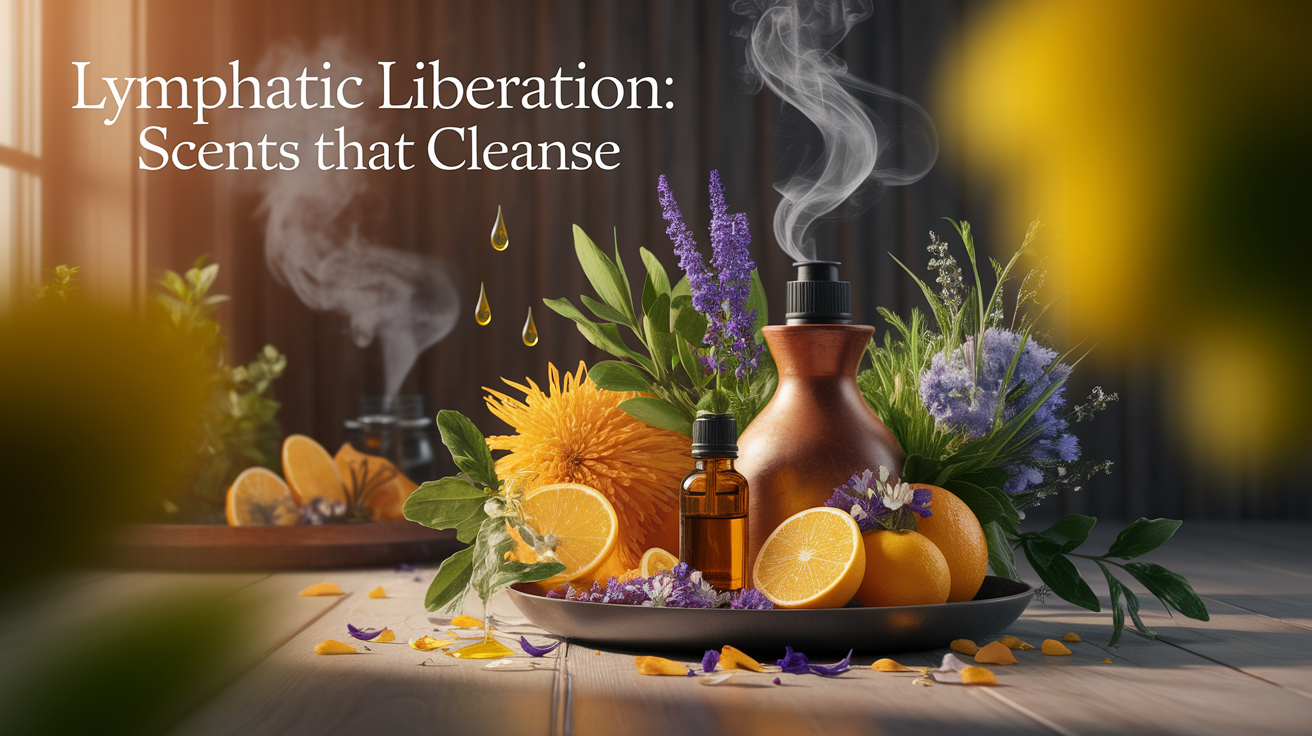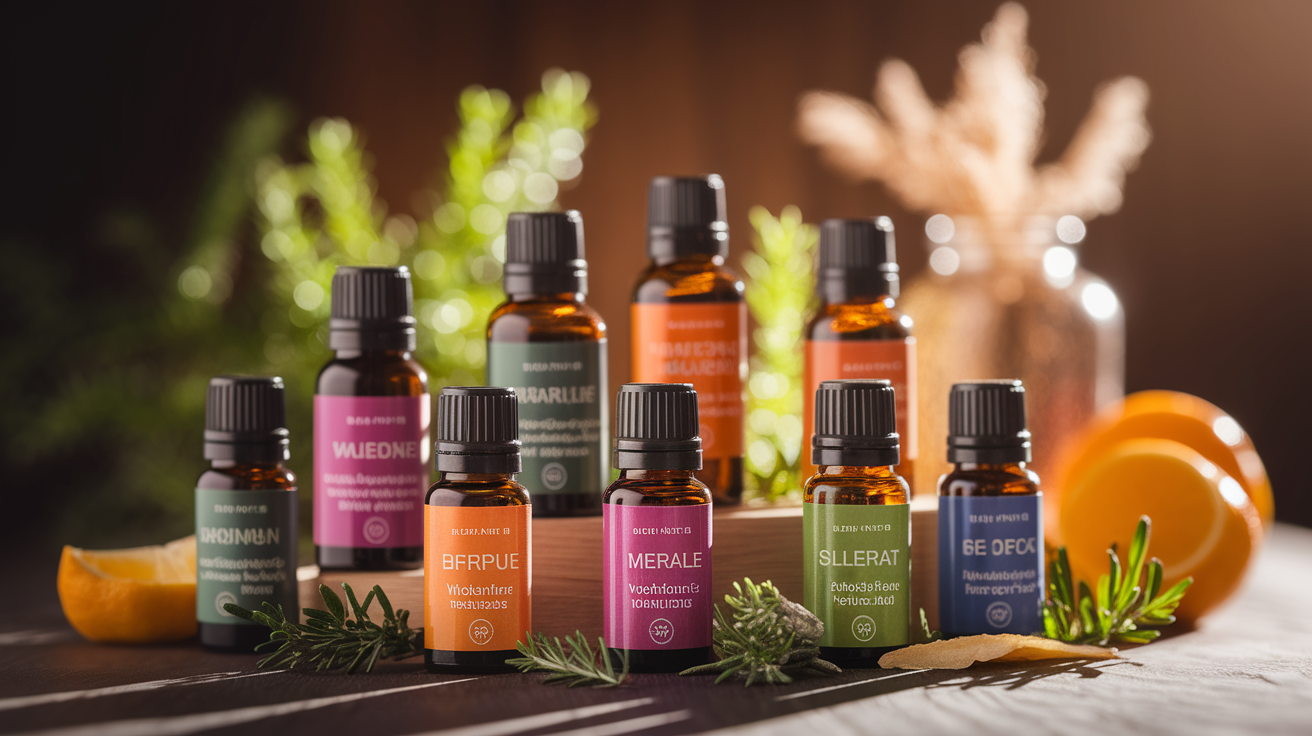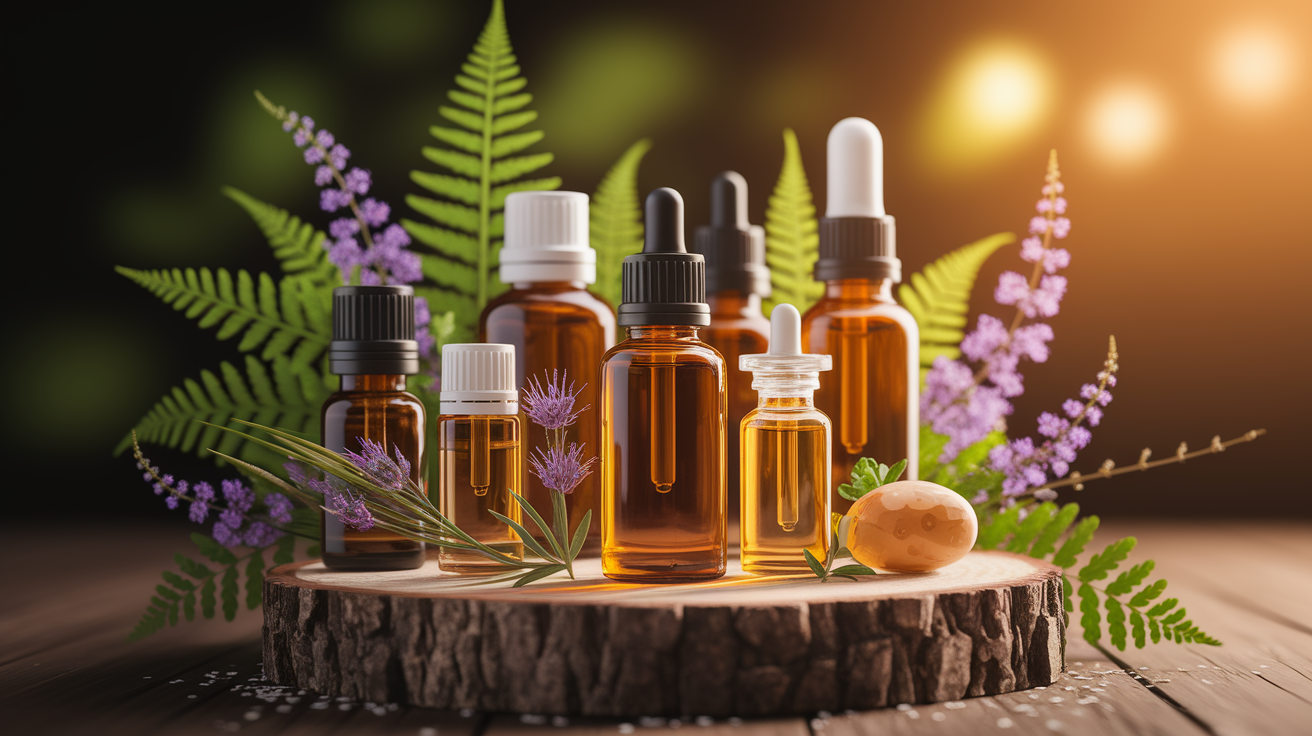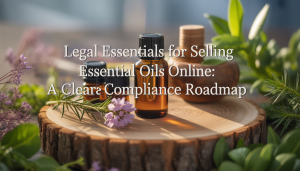Lymphatic Liberation: Scents That Cleanse
The first time I witnessed the power of essential oils on the lymphatic system, I was genuinely amazed. A client came to me with puffy ankles and that general feeling of heaviness we sometimes get when our body’s natural detoxification highways are congested. After just three sessions using specific essential oils and gentle massage techniques, the transformation was remarkable.

Our lymphatic system is truly fascinating—it’s like the body’s sanitation department, collecting cellular waste and filtering out toxins. Unlike our circulatory system, the lymphatic system doesn’t have a pump (like the heart) to move fluid around. Instead, it relies on muscle movement, breathing, and other bodily functions to keep things flowing.
When this system gets sluggish, we might experience swollen lymph nodes, fluid retention, fatigue, and even compromised immunity. That’s where the aromatic power of essential oils comes in—these concentrated plant extracts can help stimulate lymph flow, reduce inflammation, and support the body’s natural detoxification processes.
How Essential Oils Support Lymphatic Health
Essential oils work with the lymphatic system in several fascinating ways. When I first started exploring this connection, I was struck by how these aromatic compounds can influence our physiology at such a fundamental level.

Stimulating Circulation
Many essential oils have stimulating properties that encourage blood flow and, by extension, lymphatic movement. When circulation improves, the lymph fluid moves more efficiently through its vessels, carrying away toxins and cellular waste.
Reducing Inflammation
Inflammation can impede proper lymphatic function. Certain oils contain compounds with anti-inflammatory properties that help reduce swelling and allow for better lymph flow. This is particularly important when dealing with edema or swollen lymph nodes.
Supporting Detoxification
The lymphatic system is a key player in the body’s detoxification processes. Some essential oils support the lymph nodes in their filtering function, enhancing the body’s ability to eliminate toxins and waste products.
Immune System Support
Since the lymphatic system is intricately connected to immune function, oils that boost immunity also indirectly support lymphatic health. This creates a positive feedback loop—better lymphatic flow improves immune function, and a stronger immune system helps maintain lymphatic health.
Top Essential Oils for Lymphatic Cleansing
Over my years of working with aromatherapy for lymphatic support, I’ve found certain oils to be particularly effective. Here’s my curated list of the most powerful essential oils for lymphatic cleansing:

Geranium
Geranium oil tops my list for lymphatic support. Its balancing properties make it exceptional for reducing swelling and stimulating lymph flow. I’ve seen remarkable results using geranium in cases of mild lymphatic congestion, particularly in the legs and ankles.
Citrus Oils
The refreshing scents of lemon, grapefruit, and orange essential oils aren’t just uplifting—they’re powerful allies for lymphatic detoxification. These oils help break down fatty deposits and improve circulation, making them excellent choices for lymphatic cleansing protocols.
Frankincense
This ancient oil deserves its legendary status. Frankincense supports the lymphatic system by reducing inflammation and promoting healthy immune function. Its deep, resinous aroma also makes it a grounding addition to any lymphatic support blend.
Cypress
Cypress oil is my go-to for fluid retention issues. It has astringent properties that help tighten tissues and improve circulation, making it particularly effective for lymphatic drainage in the lower extremities.
Bay Laurel
Often overlooked, bay laurel essential oil is a powerhouse for lymphatic support. It’s beneficial during times of immune challenge, as it supports both the lymphatic and respiratory systems simultaneously.
Other Beneficial Oils
Additional oils that deserve mention include rosemary for circulation, ginger for warming and stimulating effects, peppermint for cooling and refreshing properties, eucalyptus for respiratory and lymphatic support, and lavender for its balancing and anti-inflammatory benefits.
Practical Application Methods
Knowing which oils to use is only half the battle—how you apply them makes all the difference in their effectiveness for lymphatic support.

Lymphatic Drainage Massage
This is my favorite method for using essential oils to support the lymphatic system. Here’s a simple technique I teach my clients:
- Dilute 3-5 drops of your chosen essential oils in 1 tablespoon of carrier oil (jojoba or sweet almond work beautifully)
- Begin at the extremities (feet or hands) and work toward the heart using light, sweeping motions
- Use very gentle pressure—lymphatic vessels are just below the skin’s surface
- Pay special attention to areas with concentrations of lymph nodes: behind the knees, inner thighs, armpits, and neck
- Always stroke in the direction of the heart to support the natural flow of lymph
DIY Lymphatic Support Blend
Here’s a blend I’ve refined over years of practice:
- 3 drops geranium essential oil
- 2 drops grapefruit essential oil
- 2 drops cypress essential oil
- 1 drop frankincense essential oil
- 2 tablespoons sweet almond oil as carrier
Mix well and apply using the lymphatic drainage massage technique described above. This blend supports circulation while addressing fluid retention and inflammation—the trifecta for lymphatic health.
Aromatic Bath
A warm bath with essential oils can support lymphatic flow through the combination of aromatherapy and the gentle pressure of water on the body. Add 5-7 drops of your chosen oils mixed with 1 tablespoon of carrier oil to your bath water, then soak for 20-30 minutes.
Compress Application
For targeted support of specific lymph nodes or areas of congestion:
- Fill a bowl with warm water
- Add 3-5 drops of essential oil
- Soak a clean cloth in the water
- Wring out excess water and apply to the affected area
- Cover with a dry towel to retain heat
- Leave in place for 10-15 minutes
Safety, Dilution, and Precautions
As passionate as I am about essential oils for lymphatic support, I’m equally committed to safety. These concentrated botanical extracts must be used with proper knowledge and respect.

Proper Dilution
Never apply essential oils directly to the skin without diluting them first. For lymphatic support, I recommend a 2-3% dilution for most adults:
- For 1 tablespoon (15ml) carrier oil: 6-9 drops essential oil
- For 1 ounce (30ml) carrier oil: 12-18 drops essential oil
Jojoba, sweet almond, and fractionated coconut oil are the best carrier oils for lymphatic support. These lightweight oils absorb well and provide skin-nourishing benefits.
Special Populations
Use extra caution with certain groups:
- Pregnant women should consult healthcare providers before using essential oils
- Children require much lower dilutions (0.5-1%)
- Those with sensitive skin should start with half the recommended dilution
- People with medical conditions should consult healthcare providers
Contraindications
Avoid using essential oils on:
- Open wounds or broken skin
- Areas with active infection
- Directly on or near the eyes, inside the ears, or on mucous membranes
- Areas with severe varicose veins
If you have lymphedema or other serious lymphatic conditions, work with a healthcare provider before attempting self-care with essential oils. While these natural remedies can support conventional treatment, they do not replace medical care.
Quality Matters
I can’t stress enough the importance of using high-quality, pure essential oils. Whether you prefer brands like DoTerra essential oils, Young Living essential oils, or other reputable sources, ensure you get genuine, unadulterated oils. The therapeutic benefits we’re seeking depend on the presence of specific plant compounds that are only found in authentic essential oils.
Aroma Finale: Sustain Your Lymphatic Reset
Supporting your lymphatic system isn’t a one-time event but rather an ongoing practice. I’ve found that consistency yields the most impressive results. Here are my recommendations for maintaining lymphatic health with essential oils:
Establish a Routine
Incorporate lymphatic support into your daily self-care. Even five minutes of targeted massage with essential oils can make a difference when done regularly. I suggest starting with a morning ritual—it sets a positive tone for the day and helps wake up your lymphatic system after the night’s relative stillness.
Stay Hydrated
Essential oils work best in a well-hydrated body. Lymph fluid is largely water, so proper hydration is crucial for optimal flow. Consider adding a drop of lemon or grapefruit essential oil to your water glass (using oils approved for internal use only) for an extra lymphatic boost.
Move Your Body
Remember, the lymphatic system lacks its own pump. Physical activity creates the muscle contractions needed to move lymph fluid through the body. Combine your essential oil practice with regular movement for synergistic benefits. Even gentle exercise like walking or stretching makes a difference.
Listen to Your Body
Your body will tell you what it needs. If you notice increased fatigue, puffiness, or tenderness in lymph node areas, it might be time to step up your lymphatic support routine. Conversely, if you experience irritation or sensitivity to certain oils, honor that feedback and adjust accordingly.
The journey to lymphatic wellness through essential oils is profoundly personal and rewarding. As you become more attuned to your body’s responses, you’ll intuitively understand which oils and techniques work best for your unique system. This natural approach to supporting one of the body’s most important cleansing mechanisms can improve overall health and vitality.
Remember that the lymphatic system works tirelessly behind the scenes to keep us healthy. By offering it some aromatic support, we simply acknowledge its importance and give it the tools to function optimally. The result? A body that feels lighter, cleaner, and more energized—all through the remarkable power of plants distilled into those precious bottles of essential oils.












